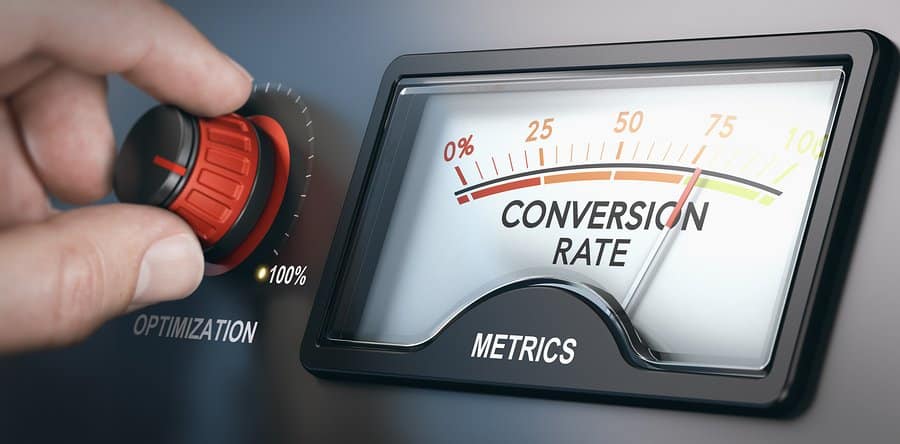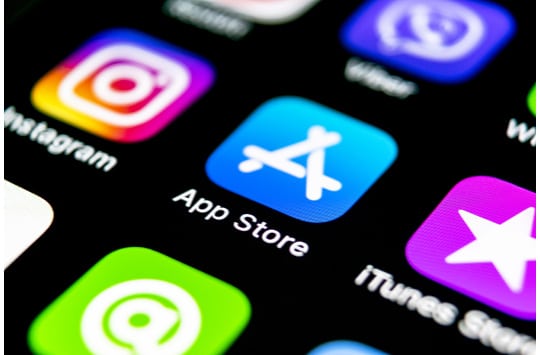Source: Bigstock

Although a real strength of the subscription business model is to retain customers who are happy to keep sending in subscription fees, the fact is that new growth requires new customers. Marketing to prospective subscribers and converting them into paying customers is the heart of conversion marketing.
This column seeks to take a look at the primary strategies and tactics for converting leads into subscribers, based on what research data indicates about effectiveness and ROI.
It is interesting to see where the opinions of marketers lead us on this issue. In 2018, Hubspot asked over 6,000 marketing professionals about their priorities over the next 12 months. First and foremost: converting leads into customers.

(Source: Hubspot, via Statista)
Almost 70% of responding marketers are prioritizing new customers, followed by boosting web traffic at 54% and increasing revenue from existing customers at 44%. The importance of converting leads into new customers to uppermost for marketers.
WHAT IS EFFECTIVE?
And digging deeper into marketer minds, another poll asked marketing professionals about the most effective communications strategy for converting leads into new business. Far and away the most popular — email.

(Source: DGR, via Statista)
A whopping 81% mentioned email as one of the most effective channels for conversion. Website marketing garnered 50%, and telemarketing, 45%.
ATTRIBUTION
The surveying above gives you a gut check into what marketers care about when planning conversion campaigns, but once one moves past opinion to actual data-driven metrics, the effectiveness of marketing efforts gets tricky to measure, because a company’s marketing campaign likely includes a number of tactics, and telling which tactic was the most effective driver of conversion is not easy. Was it the Instagram post with the product video that the customer watched, or the email that the customer received, or the coupon code the customer used when at last she signed up for the service?
Marketers sometimes look at the first point of contact, “First Touch,” as the primary driver. Others look at “Last Touch” instead. Check out this article at Sidecar for a deep dive into these nuances.
Certainly, as the digital market becomes more saturated with savvy consumers, a multi-touch model needs some consideration. Mike Farrell at Marketing Land digs into the issue:
- The customer journey has grown increasingly complex, so optimizing for a single action or channel ignores a much bigger picture of how consumers engage with a retailer’s brand messaging on the way to purchase. A customer, for example, may discover a new product on Pinterest, rediscover that product through display ad retargeting, research the product via Amazon, and finally make the purchase after receiving a promotional email. This journey can occur across desktop, mobile and voice assistants. Valuing only the last touch, the email click ignores the very important role each marketing activity had in driving the sale and limits marketers’ ability to develop greater cross-channel cohesion.
Quoted at Marketing Week, marketing expert Kat Ward-Smith agrees that an awareness of everything a consumer touches contributes to the buying (or subscribing) decision.
- Social media metrics can’t be considered in isolation … Instead they need to be mapped together with our marketing tracking tools to see whether objectives are being met. It’s more complex than just ‘this post got loads of likes’. Engagement is best measured when paired with a form of brand tracking. People are starting to realise that social is rarely an immediate win. It requires patience and a long lead to shift the dial.
EMAIL CONVERSION EFFECTIVENESS
But not all tools in a marketer’s toolbox are created equal. As the infographic above suggests, email remains a first choice, and the measurement options that email allows makes it easy to see why. Here are some key performance indicators for email effectiveness:

(Source: TRG; OneSpot, via Statista)
In terms of strategy, it seems that personalized email appeals are only the slightest bit more effective than non-personalized ones.
What about other email strategies? Here is a look at some of the most effective, as judged by a survey of marketers.

(Source: Campaigner, via Statista)
Even a slight edge is enough to give marketers confidence in the power of personalization. Segmentation, that is, splitting your audience into finer and finer slices, with a targeted message for each slice, is also as popular in this analysis. Writing in Forbes, PMG co-founder Kim Charles pushes the power of this tactic:
- Segmentation empowers your team to customize content for specific buyer roles and needs. For example, we have found success in both demand gen and account-based marketing campaigns by identifying key decision makers at target companies and investing in more personalized content for them. Segmenting email lists by sub-industry or industry size can also make your outreach more effective.
SOCIAL MEDIA CONVERSION EFFECTIVENESS
Social media, both on its own and as part of an email campaign, can also be an effective tool for driving conversions, especially as part of an influencer marketing drive. But how do you measure the effectiveness of engaging an influencer on social media? Here’s how marketers are measuring influencer success:

(Source: Linqia, via Statista)
Conversions are pretty middle-of-the-pack when measuring influencer success, in part because there may not be a one-to-one correlation. That is, influencers are a “first touch” or “multi-touch” factor for conversions. Still, writing at Marketing & Growth Hacking, Shane Barker identifies research that pins down a key metric for influencer-driven conversions:
- It’s not enough to simply measure the leads generated thanks to your influencer campaign. It’s more critical to measure the number of leads you actually converted into sales. Conversion tracking is just as important, if not more, an influencer marketing KPI. Speaking about conversion rates, Grapevine analyzed 150 influencer marketing campaigns. According to the study, the average the rate of conversion via influencer marketing is 2.55%.
Of course, the 800-lb gorilla of the social media market, Facebook, has been extensively studied in terms of conversion effectiveness. Take a look at what marketers expect to get out of Facebook interactions:

(Source: Worldwide; Metricool, via Statista)
Only 5.26% of Facebook marketing campaigns aim directly at conversions. That may be because gaining conversions on Facebook is relatively expensive:

(Source: Worldwide; Metricool, via Statista)
PAYMENT PAGE CONVERSION EFFECTIVENESS
But regardless of the method used to drive a conversion, in the end, most customers end up at a payment page on the company website. And with the web page as the ultimate destination, if it important to consider a website’s influence on conversion as well. Just to put these conversion rates into perspective, consider this data on conversion rates for online shoppers:

(Source: Monetate, via Statista)
But as Grace Kaye at Marketing Land declares, none of that matters if users come to your site and are frustrated with the shopping and check-out functionality. She feels strongly about it:
- For all the advice I could give about running the best display campaigns, for every piece of automation you might implement to improve your paid search activity, generating extra traffic is meaningless if your site isn’t up to scratch. If a website doesn’t match expectations or engage your users then, no matter how stunning your sequential ad messaging is up to this point, your traffic will bounce, maybe never to return.
Kaye gets into the nuts and bolts with page load time and mobile-friendly design:
- A one-second delay in mobile page speed load time can impact conversions by up to -20 percent. Think of all of the effort that went into building the landing page and all the money spent on acquiring the traffic – lost at the first hurdle. Visitors are five times more likely to leave your site if it isn’t mobile-friendly, which has a huge drop in pageviews and customer satisfaction.
That factor takes on added significance when one considers that potential customers are less likely to convert when they are on mobile devices:
Source: Bigstock

0)](Source: Monetate, via Statista)
Insider Take
For subscription marketers, the takeaway is clear. Getting a customer all the way from first touch to placing an order is a process. That process includes a variety of platforms, strategies, and devices — and all of these need careful attention to maximize conversion.







